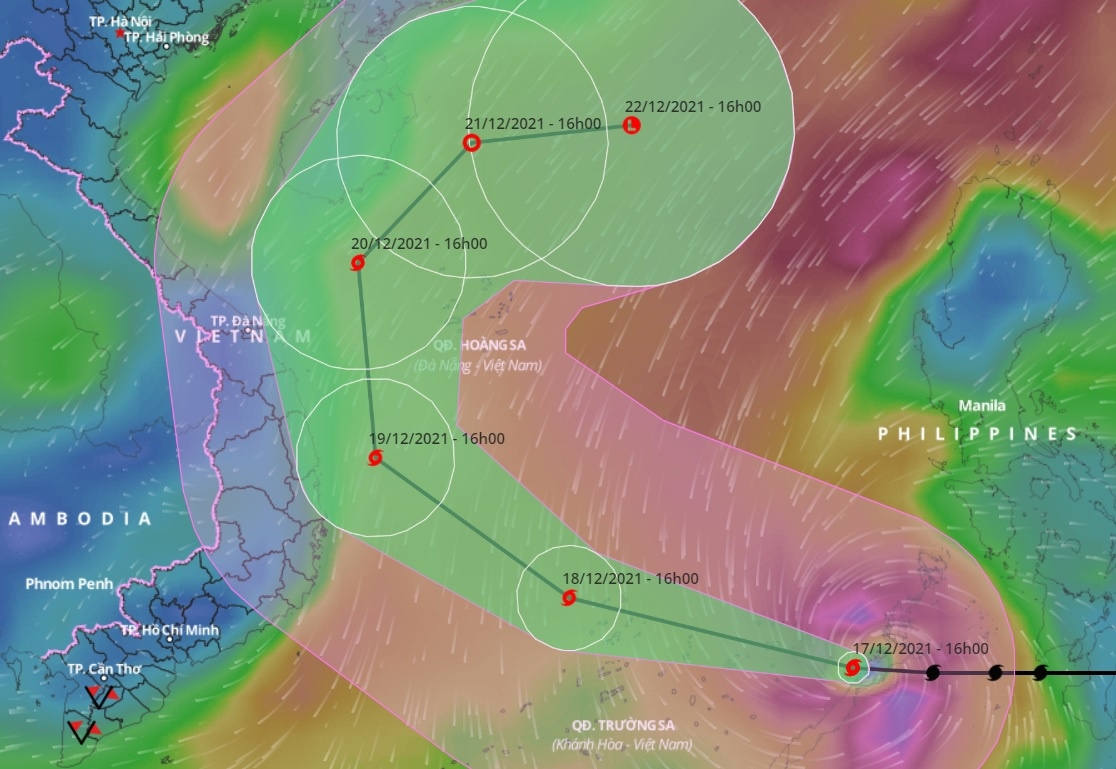
The to-be-evacuees are fishermen living along the coastal provinces from Quang Binh to Binh Thuan and those living in low-lying areas that are prone to flooding and landslides.
The evacuation plan was unveiled at an urgent meeting in Hanoi on December 17 with Deputy Prime Minister Le Van Thanh in the chair to examine localities’ preparations to cope with the coming super typhoon.
It was reported that at least five coastal localities, namely Quang Tri, Da Nang, Quang Nam, Quang Ngai and Binh Dinh, have banned fishing vessels from setting sail. Other localities are set to impose a similar ban on December 17-18.
Rai, after pounding the Philippines on December 16-17, entered the East Sea with winds gusting nearly 200kph near its centre.
The super typhoon is forecast to move closer to the central coast on December 19 and suddenly change its course toward the north.
However, it will cause rough seas and bring heavy rain to the central coastal provinces from Quang Tri to Quang Ngai, with rainfall to climb as high as 250mm.
At the meeting, Deputy PM Le Van Thanh asked localities to closely monitor the development of the super typhoon and develop response scenarios.
“Localities and people are often complacent about storms that arrive late every year,” he said, recalling past lessons in which several localities had to pay a high price for their apathy.
He requested relevant forces, including the police and army, to stay ready to support people onshore and at sea. He also asked localities to work closely with border guards to send signals to fishing boats offshore to seek storm shelters nearby before Rai moves closer.